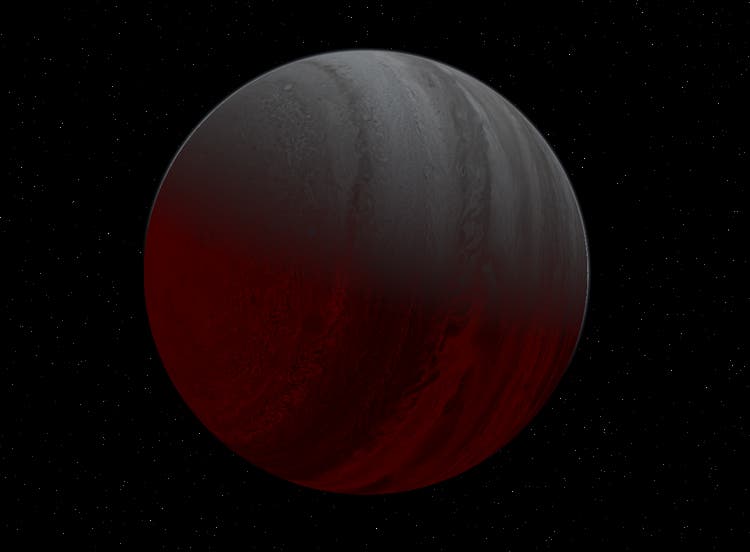Scientists have been looking at exoplanets for a while now, and one of the types of exoplanets that’s easiest to spot is the so-called Hot Jupiters.
Hot Jupiters are a type of planet that resembles Jupiter (they’re essentially gas giants) but they lie very close to their star — which makes them hot. But like the moon and the Earth, hot Jupiters are generally tidally locked with their star, which means one of the side is always facing the star while the other is always facing away. For the first time, researchers have looked into the dark side of a hot Jupiter.

WASP-121 b is nearly two times the size of Jupiter and it lies so close to its star that it only takes it just 30 hours to complete a rotation. The planet was first discovered in 2015, but now, thanks to some fresh data from Hubble, astronomers can analyze it in more detail than ever before.
The planet is tidally locked, and there’s a huge temperature difference between the side that is facing towards the star and the side facing outer space. Because it’s so close to its star, even the ‘cold’ side is hot, but not nearly as hot as the star-facing side. The hot side has temperatures beyond 4,940°F (2726 °C), so hot that it breaks water molecules apart into hydrogen and oxygen. Meanwhile, the dark side has temperatures of ‘just’ 2,780°F (1526 °C), obviously still very hot, but cold enough for water molecules to form again.
The team calculated that the planet’s atmospheric movements are pushed by winds that whip the planet at whopping speeds of up to 5 kilometers per second (or more than 11,000 miles per hour).
Because there’s such a big temperature difference between the two sides, strong winds rip from one side to the other, sweeping atoms around. There’s no way water clouds (let alone liquid water) can exist on such a planet, but Hubble data shows that temperatures are low enough for metal clouds to form on the nightside. Iron and corundum (the mineral that makes up rubies and sapphires) appear to be present on the planet, and these are likely the minerals that form clouds on WASP-121 b.
This study marks the first time an exoplanet’s global atmosphere has been studied, the researchers say. The study could help us understand how the entire class of hot Jupiters forms and what implications they have for the formation of solar systems.
“We’re now moving beyond taking isolated snapshots of specific regions of exoplanet atmospheres, to study them as the 3D systems they truly are,” says Thomas Mikal-Evans, who led the study as a postdoc in MIT’s Kavli Institute for Astrophysics and Space Research.
Journal Reference: Mikal-Evans, T., Sing, D.K., Barstow, J.K. et al. Diurnal variations in the stratosphere of the ultrahot giant exoplanet WASP-121b. Nat Astron (2022). DOI: 10.1038/s41550-021-01592-w









